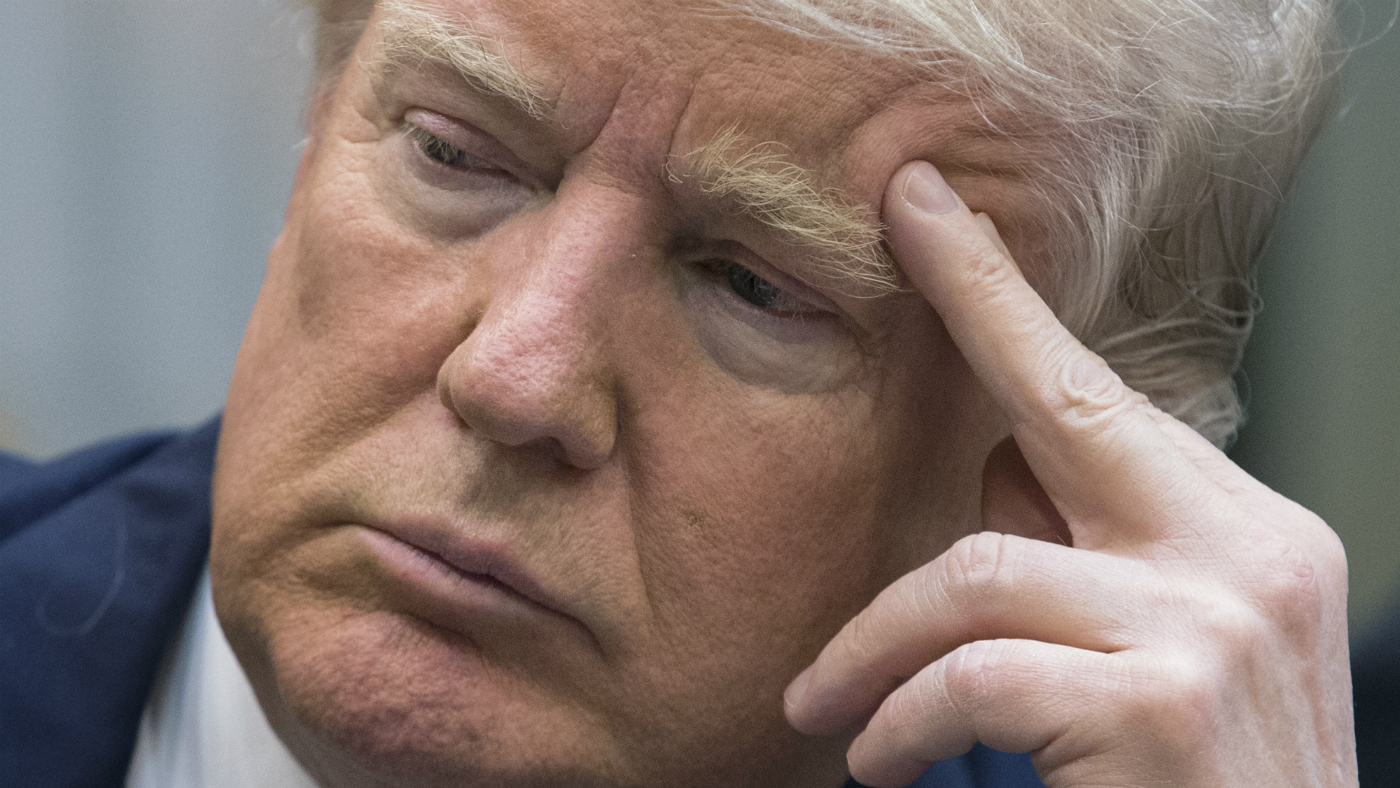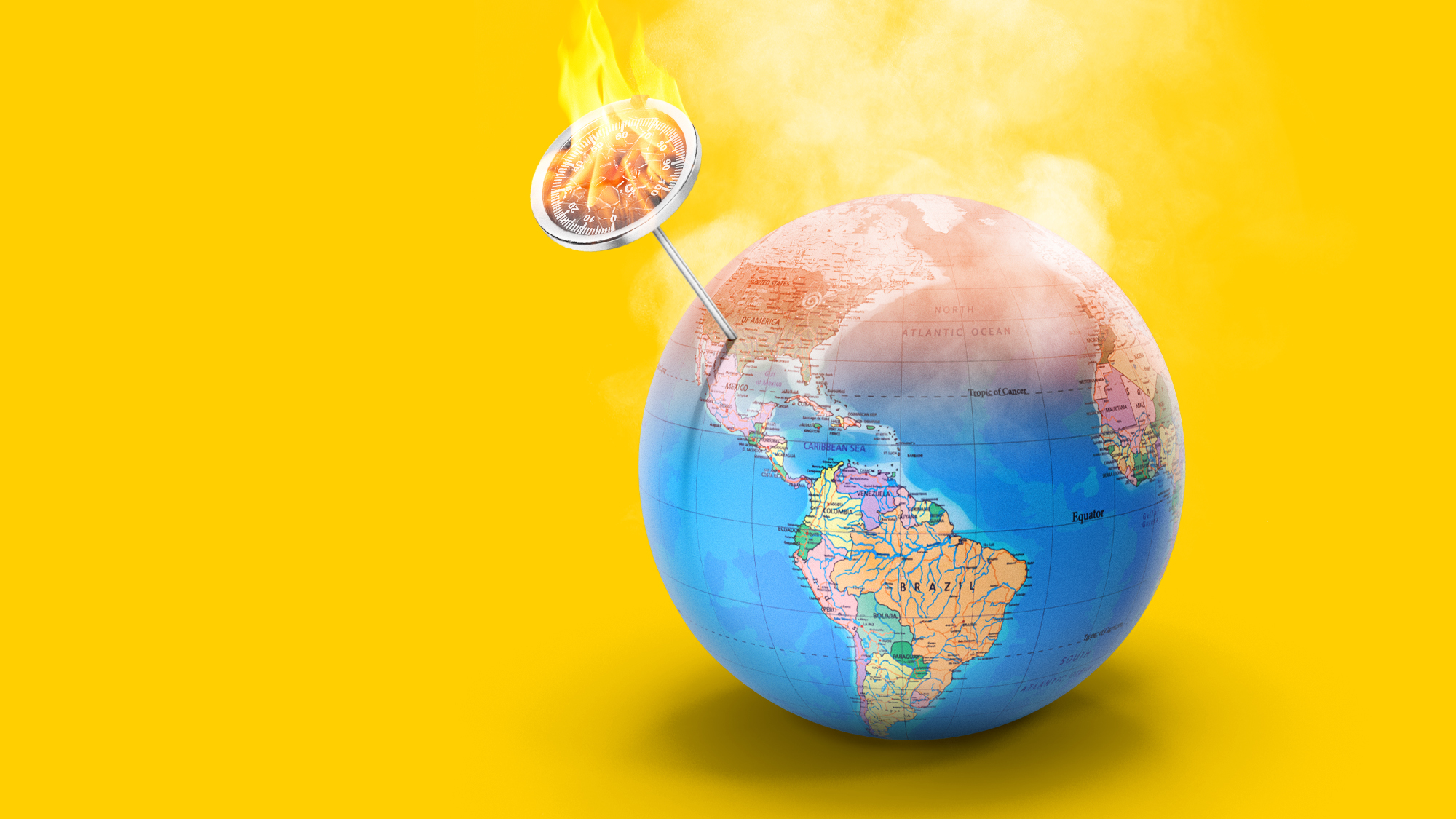Will Donald Trump lead a nuclear power renaissance?
New American president has aired very pro-nuclear views in the past

When it comes to nuclear energy, the outspoken American president Donald Trump has thus far been uncharacteristically quiet.
Trump is certainly pro-nuclear. During his campaign he said nuclear power is "a valuable source of energy and should be part of a program for providing power for America long into the future".
More directly, Bloomberg reports it has seen a document from Trump’s transition team asking the US Energy Department how it can keep nuclear reactors "operating as part of the nation’s infrastructure" and help prevent shutdown of plants.
The Week
Escape your echo chamber. Get the facts behind the news, plus analysis from multiple perspectives.

Sign up for The Week's Free Newsletters
From our morning news briefing to a weekly Good News Newsletter, get the best of The Week delivered directly to your inbox.
From our morning news briefing to a weekly Good News Newsletter, get the best of The Week delivered directly to your inbox.
The document also purportedly mentioned restarting the work on Yucca mountain, a proposed site for containing nuclear waste, the development of which was halted by the Obama administration.
According to Bloomberg, five of the States’ nuclear plants have closed in the last five years, with more set to shut as their profits are squeezed by cheaper renewables and gas.
American nuclear is arguably in a dire state - after all, it was propped up in part by Obama policies driven by the desire to avoid or mitigate climate change. Trump on the other hand feels ambivalent about climate change at best, and in active denial at worst.
Trump and his team haven’t given much mention of nuclear energy in the two months since taking office, but they have talked quite a bit about coal - motivated more by job creation than climate change.
A free daily email with the biggest news stories of the day – and the best features from TheWeek.com
The President has, though, appointed Rick Perry, a climate change sceptic who was a strong advocate of a wide range of energy sources, including nuclear, when he was governor of Texas, as his Energy Secretary.
Law360 argues that nuclear plants create three times as many jobs during the construction phase as coal, and twice as many in their running and maintenance.
That's the key thrust of the new pitch for nuclear from the likes of the Nuclear Energy Institute, whose chief executive Maria Korsnick told analysts recently that Trump would be "much more positive than negative for nuclear power".
She added that states like Illinois, New York and Connecticut are already stepping up with financial support.
What about China?
If there is a nuclear renaissance being initiated by a global superpower, it’s arguably happening on the other side of the Pacific.
As odd as it may seem, we find ourselves in a world where China’s energy policy appears more progressive and climate change-focused than that of the United States.
And yet, here we are: Bloomberg reports that China’s rapid nuclear expansion means it could - if the relative rates of growth continue - surpass the States in terms of nuclear power generation by 2026.
Indeed, China is set to triple its nuclear power output to almost 100 gigawatts by then - having added 8 gigawatts in the last year alone.
China is also considering building floating, mobile nuclear power plants - although according to the Daily Mail these would be meant to power islands and oil and gas exploration operations rather than pour power into the mainland grid.
According to the Mail, China has 36 operating nuclear power stations, with 21 under construction.
Reuters reports that a senior Chinese nuclear power executive has said China actually needs to accelerate its nuclear growth if it is to meet its targets of reducing pollution by 2020, meaning the construction of between four and six new reactors per year until then.
One state reactor builder even claimed in a state-owned Chinese newspaper that China’s nuclear output could reach 120 to 150 gigawatts by 2030.
What are the markets telling us?
CNN Money says the investment markets seem enthusiastic about a Trump presidency when it comes to nuclear energy, as shares in uranium-producing companies have rocketed 40 per cent since election day.
The price of uranium itself remains low. According to Canada’s the Globe and Mail newspaper, Canadian uranium producer Cameco is considering selling its American mines because of the continued slump in uranium price.
But demand looks likely to pick up markedly – and there is another positive consequence for jobs closer to home.
Berkeley Energia is an Anglo-Australian company that has the only uranium mine currently under development in the world, in Salamanca in Spain. When completed, the mine is set to be the biggest in Europe - and subject to high EU standards unlike other prominent producer countries such as Kazakhstan.
Crucially it is located in a historic mining town that has suffered years of unemployment and has created 50 jobs already, which will rise to 150 by the middle of this year and will eventually reach 450. Indirectly the project will create 2,000 jobs in the region.
The case for nuclear
It’s easy to feel reluctant when it comes to embracing nuclear energy, given the high-profile disasters of Fukushima and Chernobyl before that.
But it’s hard to deny the environmental case for nuclear as a promising way forward.
To put it simply, nuclear energy is clean and reliable - two things that rarely go together when it comes to energy production.
The mainstream renewables of wind and solar are clean, but they rely on sources that fluctuate unpredictably - sunny days and wind – and battery storage technology that is still sorely lacking.
Hydro, the other clean renewable, is very geographically limited - there’s no getting around the fact that you need a river.
While producing constant output, nuclear avoids the dirty pollution of coal and gas because it doesn’t actually burn fuel. Instead, it uses nuclear fission to produce heat, which boils water, which spins a turbine that generates power.
There is of course the problem of the (relatively little) exhausted fuel produced by the nuclear fission process, but newer methods involve re-processing spent fuel to reduce this.
-
 Could smaller cars bring down vehicle prices?
Could smaller cars bring down vehicle prices?Today’s Big Question Trump seems to think so, but experts aren’t so sure
-
 2025’s most notable new albums
2025’s most notable new albumsThe Week Recommends These were some of the finest releases of the past year
-
 Trump aims to take down ‘global mothership’ of climate science
Trump aims to take down ‘global mothership’ of climate scienceIN THE SPOTLIGHT By moving to dismantle Colorado’s National Center for Atmospheric Research, the White House says it is targeting ‘climate alarmism’